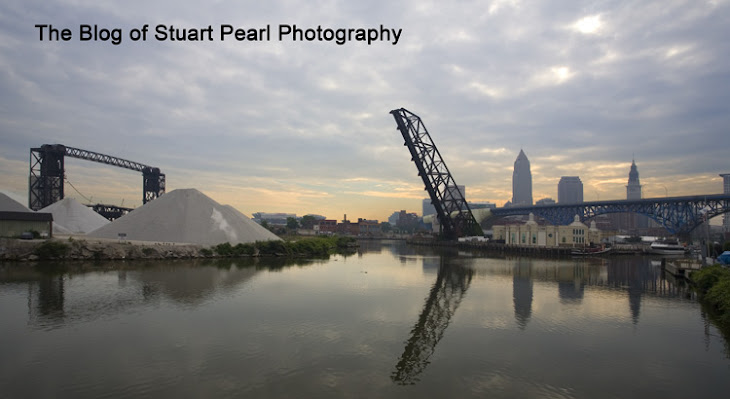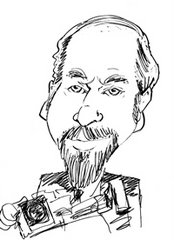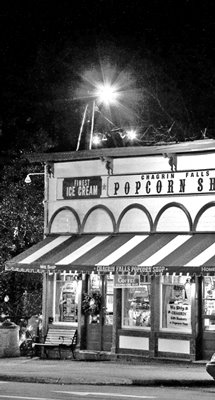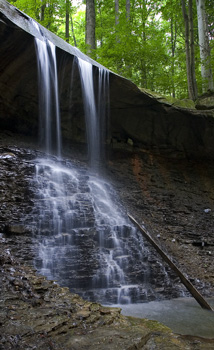© Stuart Pearl 2014 - Click on Image to Enlarge Photo Gallery
Cleveland's old Innerbelt bridge is fast losing weight. It shrinks everyday amidst showers of sparks and moving cranes, shedding steel beams like a dog loses fur. Its concrete deck has been completely removed. All that remains is a skeleton of steel girders that is no longer continuous across the Flats Valley. Right now the remains of the old bridge stands directly in the footprint of what will be the new Eastbound span. That structure will be completed in 2016.
Demolition work began in December 2013 about a month after the new westbound Voinovich Bridge opened. Giant rotary saws started cutting the old concrete deck as the first steps in taking down the old bridge piece by piece.

A small fleet of machines was used to pre-cut the roadway before jackhammers were moved in to begin breaking up the concrete.
Gaps in the old bridge become prominent as huge sections are cut from the spans. Cranes are used to lower the pieces once the connections have been severed. This is the first time in over five decades that sunlight filters through the old steel in a myriad pattern of shadows and polka dots. There is no longer any concrete roadway to block the rays or weather.
Workers are raised into position via "man cage" cranes where they use torches to cut specific beams and braces. The order of cutting is very specific. If the wrong steel is cut at the wrong time the bridge could literally fall apart around the workers.
With the roadbed and steel removed, you feel like an urban archaeologist as old graffiti is discovered and displayed in the light of day.
The archaeological comparison continues as the bridge is reduced to rubble. Some of the old bridge reminds one of Greek temple ruins.
Tremont's Annunciation Greek Orthodox Church appears to rise out of the rubble of the old exit ramp at W. 14th and Abbey.
The new Westbound Voinovich Bridge stands in sleek contrast to the old structure as it crosses into Tremont.
Cranes are an essential part of the demolition. Every cut truss must be accounted for in order to maintain a safe environment.
In July much of the bridge will be brought down with controlled explosive demolition. Prior to that time though very specific sections will be removed by hand. Each beam has to be tethered to a crane before it is cut from the bridge. Man lift cages are used to raise the workers into position at those locations where cuts are being made.
Some of the steel is being allowed to fall into the Cuyahoga. Prior to a "drop" each piece is tethered with a floating marker buoy and a steel cable. Everything must be accounted for so no navigation hazards are created.
The falling beams settle to the bottom of the river but the colorful buoys indicate their positions to the retrieval crews. The workers boat out to the marked position, snag the marker buoy and then attach the cable to one of the massive cranes. The steel is then picked up and placed onto a nearby floating barge.
Steam is generated as the superheated "torched" beam strike the Cuyahoga.
As of last month over 6,000 tons of steel had been recycled from the demolition by ODOT. To give you an idea how much that is, it's roughly the same quantity that was used to build the 3.3 million square foot campus for Amazon in Seattle.
The river had to be closed to navigation several days during June as much of the crane and man-lift activity occurred. It would have been much too hazardous to have the large ships as well as recreational boats operating under the span being dismantled.
The Flats Valley takes on a completely different look at nightfall. Demolition continues around the clock and torches show where the activity is.






























































